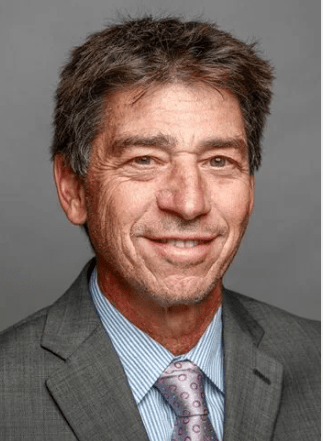
The U.S. Food and Drug Administration approved dupilumab for eosinophilic esophagitis in patients 12 and up in May 2022. This makes it the first approved treatment for EoE, a milestone achievement.
Dr. Marc Rothenberg, the co-lead investigator on the related clinical study, called the approval “a victory for science, patients, rare diseases and advocacy.” The injectable monoclonal antibody treatment, known by the brand Dupixent, is also approved for more serious forms of asthma and atopic dermatitis.
Allergic Living caught up with Rothenberg, director of the Cincinnati Center for Eosinophilic Diseases at Cincinnati Children’s Hospital, to get his thoughts on the dupilumab approval for EoE and why, when it comes to EoE therapies, he’s confident this novel therapy is just the start.
“There’s going to be a host of drugs approved, I anticipate in the next five years,” he tells Allergic Living in the interview below.
EoE, which affects approximately 160,000 Americans, is a challenging form of food allergy, in which specific foods will trigger an immune response. In EoE, white blood cells called eosinophils accumulate in the esophagus. They set off inflammation that damages and often narrows the long tube to the stomach. This leads to a range of symptoms including dysphagia, or difficulty swallowing, food refusal in children, and food getting lodged in the esophagus.
Key Study Results
The FDA approval swiftly follows the successful, two-part Phase 3 clinical trial, the second half of which Rothenberg presented in February at the AAAAI allergists’ meeting in Phoenix. The main results are:
• In Part A and B of the controlled trial, 60% and 59% of patients receiving the drug respectively met a predetermined level for the reduction of eosinophils in the esophagus. In Part A and B, only 5% and 6% of the placebo groups met that eosinophil level.
• In both study parts, patients receiving dupilumab reported significantly better improvement in dysphagia symptoms, compared to those getting placebo.
Discussion with Dr. Rothenberg

Q: When you presented your dupilumab study at the AAAAI meeting, you said it showed “statistically significant clinically, meaningful improvements in the symptoms in adults and adolescents” with EoE. What were the meaningful improvements?
MR: The symptoms were typically related to dysphagia, or difficulty swallowing. We used a dysphasia symptom questionnaire or the DSQ. It asked different questions related to how difficult it is to swallow. Basically, they were finding fewer problems eating and swallowing.
We also had health-related quality of life issues and those were improved. The improvement of these symptoms were at levels that were considered by patients to be clinically significant based on the validation of the Patient Reported Outcome Metrics.
Q: For some with EoE, the swallowing issue can get very severe, can’t it?
MR: Absolutely. They can get permanently stuck food in the esophagus. It’s called a food impaction, and this requires surgical intervention to pluck the food out in an endoscopic procedure.
Q: Your co-lead study author said 30 to 40 percent of patients are not finding sufficient disease control with standard treatments. Those include food elimination diets, swallowed corticosteroids or proton pump inhibitors (antacid medications). Where do these fall short?
MR: We have patients who are refractory, who are not responding to other treatments. A lot of the patients taking the medications you mention are not satisfied with the degree of response. They’re also not satisfied when the disease relapses – either on or off a therapy.
And there are patients who are resistant to some of these therapies. Diet therapy is considered to be more natural, but it is very difficult to maintain and it’s also psychologically taxing. [Most EoE patients are avoiding six food groups, on what’s called the Six-Food Elimination Diet.]
Q: In presenting your findings, you said that a greater proportion of the patients in the study reached “histological remission”. How is that defined in EoE?
MR: Histological remission in EoE is defined by the eosinophilic level being below a threshold that’s considered to be substantially reduced. The normal level to be diagnosed with EoE is 15 eosinophils per high-power field. Patients who go to less than 6 are considered to have remission. [HPF is a measurement of the density of eosinophil cells seen through a microscope.]
What I’m most impressed with is the molecular changes, the biomarker changes, and the endoscopic changes. These are objective changes that we consider to be very important.
Hope for Future Therapies
Q: The approval is currently for those aged 12 and up and weighing at least 40 kilograms (88 pounds). I understand dupilumab is now being studied in EoE patients age 1 years old and up.
MR: Yes, we’ve completed something called the EoE KIDS Study. The company [Regeneron/Sanofi] has the data. It will be analyzed and published; I expect we’ll see that this calendar year. [Update: In January 2024, the FDA approved Dupixent for EoE in children ages 1 and up.]
Q: It’s exciting to have an FDA-approved treatment. But it won’t be for everyone. Are there other potential treatments you’re hopeful about that are being studied for EoE?
MR: Yes, there are a lot of good treatments being developed. There are the eosinophil-depleting antibodies, which are also in Phase 3 trials. There are the antibodies against TSLP, which are very interesting, and there is the anti-13 monoclonal antibody that’s being developed. And there are immunomodulators that are coming up.
There are a lot of studies that are in Phase 2 and Phase 3 that are currently underway, and that we’re very excited about. [For more on the EoE research pipeline see this article in the Journal of Allergy and Clinical Immunology.]
Q: A few years ago, Mount Sinai dermatologist Dr. Emma Guttman-Yassky told me that we were entering “the golden age for eczema treatment”. Do you think we’re now entering a golden age for EoE as well?
MR: Yes. We think dupilumab is going to be a game-changer in EoE. There’s also going to be a host of other drugs approved, I anticipate, in the next five years.
Q: What are you telling patients and parents managing this challenging disease?
MR: I’m telling them that the pipeline is great and we are very optimistic. The research is wonderful and there’s a lot happening over the next few years.
Q: Dr. Rothenberg, any final takeaway for Allergic Living readers?
MR: Just the power of basic research. We’re seeing it over and over again, whether it be the COVID-19 vaccine that was derived from basic molecular analysis of how genes are expressed and mRNAs produced. In immunology, it’s the case, too.
For this new drug, for instance, it’s rewarding to see the research that my lab established in terms of the role of [the cytokine] IL-13, which was originally defined in mice and subsequently in human systems, and then a proof of concept study. Then we had the conviction to pursue this with investigator-initiated trials. So it just shows the power of research and the impact that it’s having. There’s a lot of hope for the future to continue to develop better treatments, and hopefully a cure for this disease in the near future.
Editor’s Note: In a Facebook post after the FDA approval, the Cincinnati Children’s Center wrote: “All patients 12 years and older who have EoE can be evaluated for the use of dupilumab. It is not effective in all cases of EoE, and there is risk of serious allergic reactions, severe increased eosinophils, or eye and skin inflammation. Because of these risks, it may not be appropriate for all patients.”
See also: the Cincinnati Center for Eosinophilic Disorders website here.
Related Reading:
Dupilumab Shows Success in EoE, Leading to Hopes for Approval
3 Newly Approved Eczema Therapies Seen as ‘Game-Changing’
AAAAI News: Dupilumab Remission; Tezepelumab in Severe Asthma; Palforzia Safety





